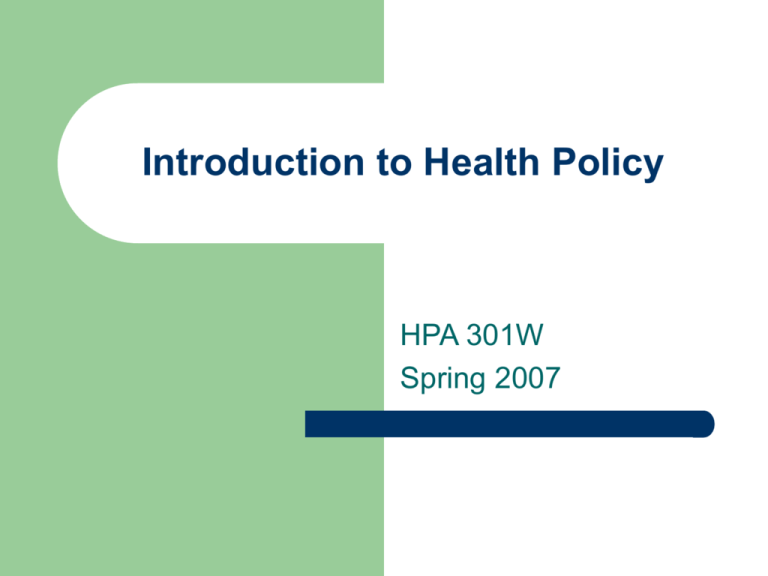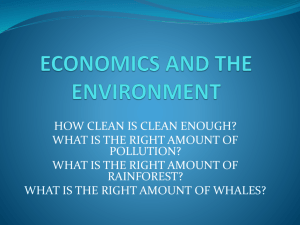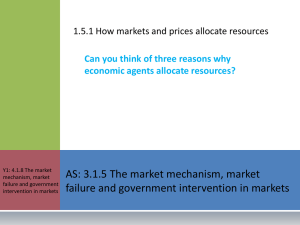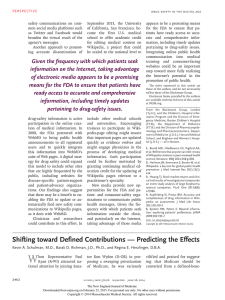Introduction to Health Policy
advertisement

Introduction to Health Policy HPA 301W Spring 2007 Health Policy Defined Health policies are public policies or authoritative decisions that pertain to health or influence the pursuit of health Health policies affect or influence groups or classes of individuals or organizations Public vs. Private Policymaking Public Policy – Policy that is established by the federal, state, and local levels of government Private Policy – Policy that is established by private organizations For example, MCOs and JCAHO Forms of Health Policies There are five main forms of health policies – – – – – Laws Rules/Regulations Operational Decisions Judicial Decisions Macro Policies Laws A rule of conduct or action prescribed or formally recognized as binding or enforced by a controlling authority Enacted by any level of government Can also be referred to as a program – For example, the Medicare program Rules/Regulations Designed to guide the implementation of laws Can be made in the executive branch by the organizations and agencies responsible for implementing laws Operational Decisions Operational decisions are made by the executive branch of the government as a part of the implementation of a law Normally these decisions consist of protocols and procedures that follow the implementation of a new law These decisions tend to be less permanent than rules or regulations Judicial Decisions These are policies that are created as a result of a decision made in the court system For example, an opinion listed in 1992 by a DHHS administrative law judge stated that a hospital was in violation of the Rehabilitation Act Amendments of 1974 Macro Policies Macro policies are broad and expansive and help shape a society’s pursuit of health in fundamental ways Example – FDA regulation of pharmaceuticals Categories of Public Health Policies Public health policies are grouped into two categories – – Allocative Regulatory Allocative Policies Designed to provide net benefits to some distinct group of class of individuals or organizations, at the expense of others(?), in order to ensure that public objectives are met In general, allocative policies come in the form of subsidies Examples – Medicare and Medicaid policies, Federal aid to medical schools Regulatory Policies Policies designed to influence the actions, behaviors, and decisions of others to ensure that public objectives are met Five main categories of regulatory policies – – – – – Social regulations Quality controls on the provision of health services Market-entry decisions Rate or price-setting controls on health service providers Market-preserving controls Social Regulations These regulations are established in order to achieve socially desirable outcomes and to reduce socially undesirable outcomes Examples – – – Environmental protection Childhood immunization requirements No smoking Quality Controls These regulations are intended to ensure that health services providers adhere to acceptable levels of quality in the services they provide and that producers of healthrelated products meet safety and efficacy standards Example – – FDA regulation of pharmaceuticals New Pay for Performance (P4P) regulations Market-entry Restrictions These regulations focus on licensing of practitioners and organizations Example – – Certificate of Need programs Physician credentialing (Hospital privileges) Rate or Price-setting Controls These regulations are designed to control the growth of prices Example – The federal government’s control of the rates of reimbursement to hospitals that participate in the Medicare program Market-preserving Controls These regulations establish and enforce rules of conduct for market participant Example – Antitrust legislation










